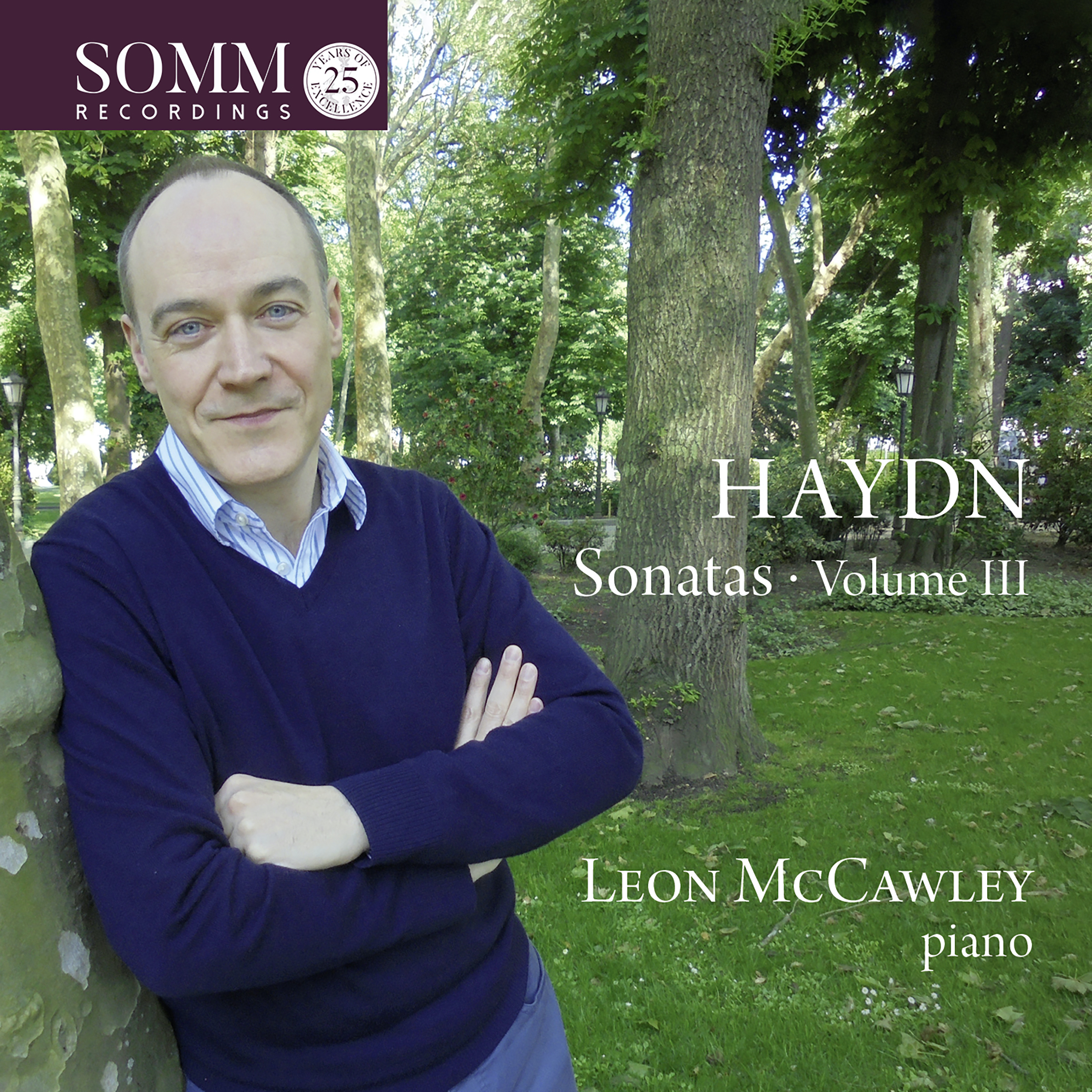Somm Recordings SOMMCD 0624
Diapason, April 2021
In his third volume of his complete recording of Haydn Sonatas, Leon McCawley again demonstrates his perfect affinity with music which is so minutely detailed as well as sounding spontaneous. Reinforced by the proximity of microphones to the piano, his unique playing shines in Sonata No. 34 in which the beautiful Adagio dominates with an eloquence which is always intimate: strength born of sadness. The rhythmic variety in the Finale (Tempo di menuetto) is outstanding. The verve of his sforzandos (which he is careful not to exaggerate), the trills, mordants and rapid descending semiquaver passages in Sonata No. 32 are no less dazzling. They play an important role in giving an added flexibility to the whole.
The opening Allegro of Sonata No. 55? A collection of pointed rhythms. As elsewhere, McCawley uses the pedal sparingly and yet nothing ever sounds dry. The writing of the vast Andante con espressione of Sonata No. 56 (dedicated to Princess Esterhazy) would at times remind us of the famous Andante and Variations in F minor in its melancholic inflexions, if it weren’t for the obsessive repeat of a somewhat imperious theme. The euphoric Vivace assai concludes an album full of spirit.
Bertrand Boissard
_ _ _
Gramophone, January 2021
Leon McCawley’s Haydn series on Somm, begun in 2016, has reached its third instalment with six sonatas dating from 1767-84. As a group, they provide an interesting overview of Haydn’s works for keyboard while in the service of Prince Nikolaus Esterházy. The earliest dates from around the time Haydn was made Kapellmeister, following the death of his predecessor at the Esterházy court. The previous year Prince Nikolaus had begun construction on Eszterháza, the sumptuous rococo palace which, with its formal gardens and elaborate surrounding structures, would come to be known as the Hungarian Versailles. In McCawley’s vivid realisations it’s easy to imagine these pieces born in such a milieu. Each sonata emerges as a succinct, self-contained drama, with airtight plot and an endless variety of characters.
In the exquisite Adagio of the A flat Sonata (HobXVI:46), for instance, McCawley is all artful simplicity, letting Haydn’s eloquent polyphony speak unimpeded. The Presto finale that follows exudes such a sense of sheer fun that you may find yourself laughing out loud. The D major Sonata (No 33) is at once robust, elegantly poised and rambunctiously witty.
The latest of these pieces are a pair of two-movement sonatas written for Princess Marie Esterházy, the newly wed daughter-in-law of Haydn’s patron. It would be difficult to conceive of anything more ebulliently joyful than the second movement of the B flat major Sonata (No 41). McCawley never invites complacency. Things are always liable to take unexpected turns, as in the moderate first movement of the D major Sonata (No 42), when a sudden collapse into an extended minor section not only occludes the sunlight but suggests some unanticipated tragedy may be at hand. Yet all is dispelled with the frolicsome high spirits of the Vivace assai finale.
McCawley plays a modern Steinway but brings such clarity to Haydn’s textures than one never feels them thickened or heavy. He’s a thoughtful, keenly intelligent artist in peak form, who brings a wealth of pianistic resources to this incomparable music. Haydn was never a virtuoso pianist on a par with Mozart or Beethoven but, as McCawley brilliantly demonstrates, his piano works are an inexhaustible source of artistic riches.
Patrick Rucker
_ _ _
Musical Opinion, January-March 2021
Another excellent set in this series. The wealth of invention- both public and private (such was Haydn’s creative genius)- is profoundly consistent throughout these works and the challenges the entire series pose for any interpreter are wholly met with and overcome by McCawley’s admirable combination of masterly technique and interpretative insight.
This is a very fine disc; those collecting this important series need no second bidding from me.
Robert Matthew-Walker
*****
_ _ _
International Piano, January/February 2021
One of today’s most impeccably musical pianists, Leon McCawley’s playing is characterised by clean textures and an innate grasp of his chosen repertoire.
These six sonatas make an exquisite set. The charming D major (No. 34) contains a jewel of profundity in its Adagio. McCawley’s G minor, N0. 32 is exceptional, his measured reading proving that less is more. He has the rare ability to make Haydn’s sparse textures speak fully.
One of the longest sonatas, the A flat (No. 31) holds a tender, expansive Adagio that simply shines, allowing us to hear its forward-thinking majesty before Haydn grounds us with a brief, sparkling finale. McCawley finds profundity in the F major sonata too, its lilting Adagio contrasting nicely with the sprightly finale. The remaining two sonatas are each cast in two movements, a joyful No. 55 and more thoughtful No. 56. Informed booklet notes by Matthew-Walker complete the deal.
Colin Clarke
_ _ _
BBC Music Magazine, December 2020
At every point, Leon McCawley’s playing is a likeable object-lesson in how to deliver livewire energy and thoughtful expression without extraneous point-making. And while he plays a modern concert grand rather than a period fortepiano, his use of middling-bright tone and spare, but not over-cautious pedalling both sounds and feel exactly right for the music.
Malcolm Hayes
Performance: ****
Recording: ****
